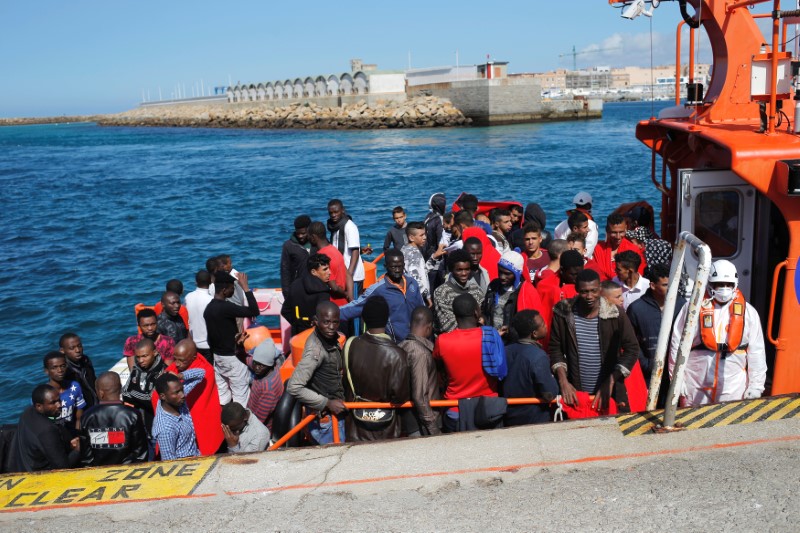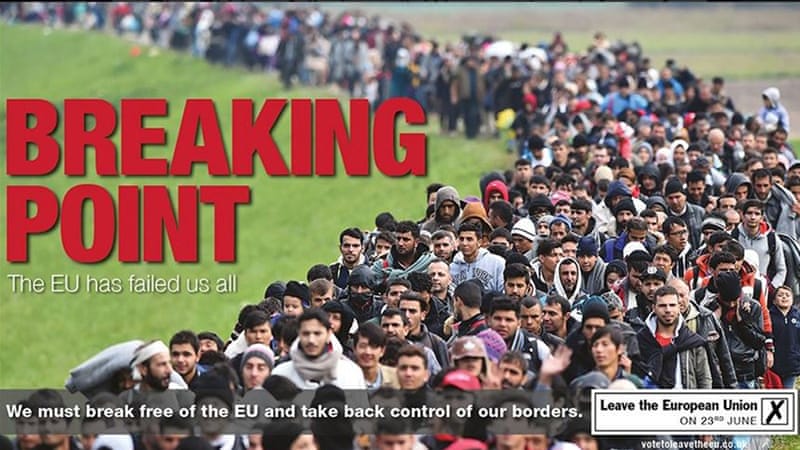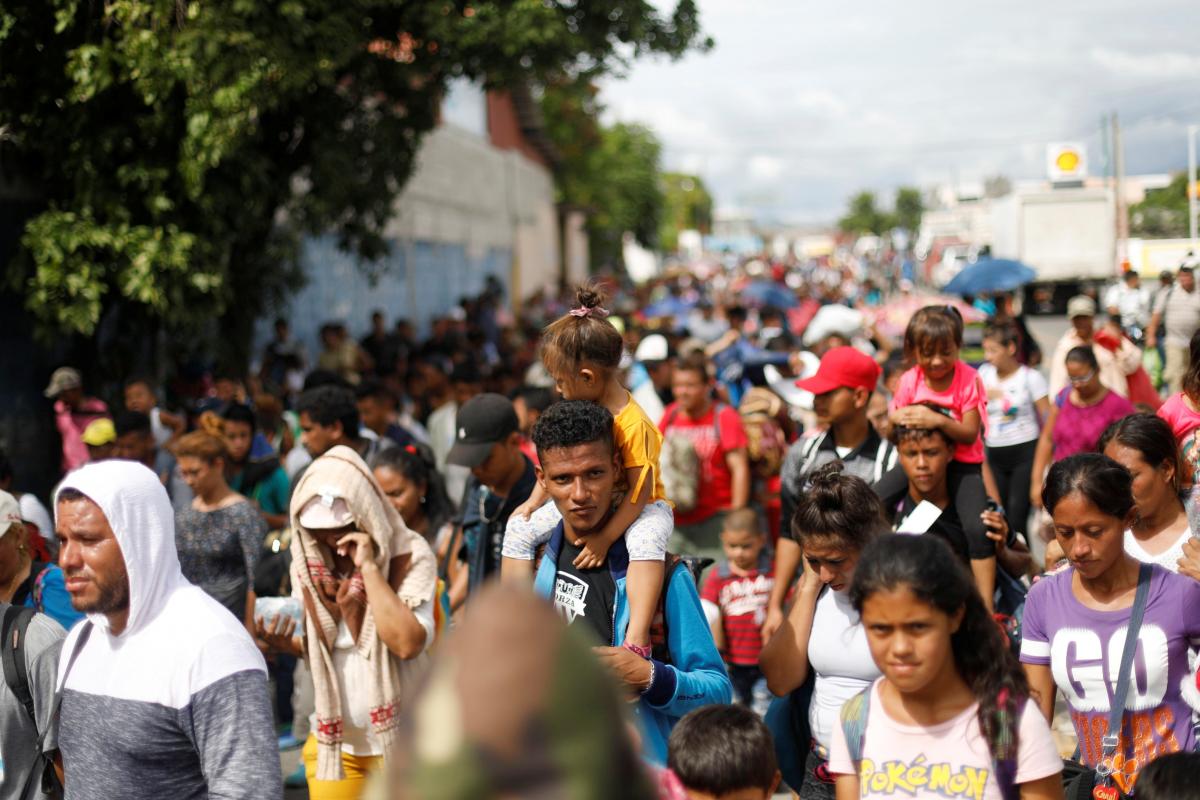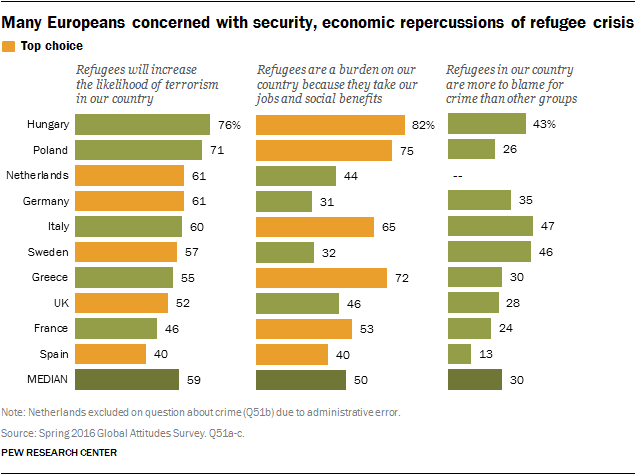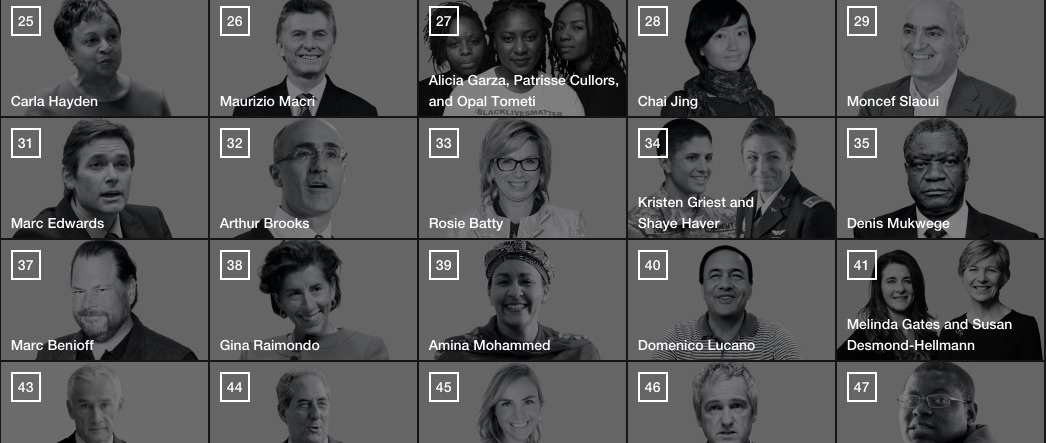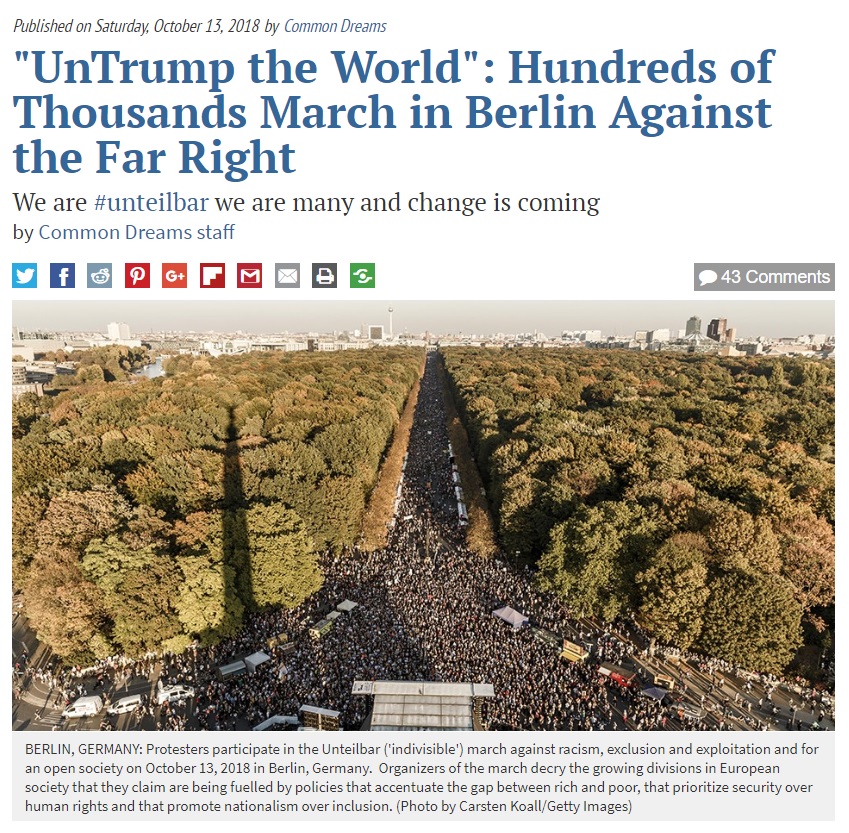Populism is dangerous and puts public health and the economy at risk. But it is hard to resist. Populist politicians thrive on fake news: it is so much easier to fuel people’s emotions if you feed them fabricated news of imaginary crises. Particularly the so-called “migrant crisis”.
Italy is a harbinger of things to come in liberal democracies. It is where political change often happens first. The largest communist party in Europe outside the Soviet Union was in Italy; yet it was the first to go after the fall of the Berlin Wall. Berlusconi, a showy media tycoon who came to power in 1994 was a proto-Trump.
Previous articles have addressed the issue of austerity (here) and the public health crisis (here). Now we look at the false “migrant crisis” fabricated by populists. Yet there is a real migrant crisis caused by the lack of assimilation of migrants already in Europe. Because the issue is not correctly diagnosed, no European country, or for that matter the U.S., has yet developed a set of policies to address it – with the exception of Sweden with its pro-active labor policies and Italy with its “Riace model”.
There is a migrant crisis for sure, but it’s not the one described by populists.
Exhibit A: Brexit. The UK voted to leave the European Union, panicked by the imagined threat of a migrant invasion and is now facing economic disaster and a near-intractable problem in Northern Ireland.
In the Photo: Brexit poster used by UKIP in 2016 campaign Source: This Photo by Unknown Author is licensed under CC BY-SA-NC
Exhibit B: Trump, with his assault on migrants and Muslims. In view of the midterm elections, he’s upped the ante in an exceptional op-ed he wrote for USA Today on 12 October and a few days later, he re-opened his “caravan” scare on Twitter, declaring it a national emergency.
In the photo: Note how they move from right to left, just as in the UKIP Brexit poster, but there are children here. These are Honduran migrants, part of a caravan trying to reach the U.S., during a leg of their travel in Chiquimula , Guatemala October 16, 2018. Source: REUTERS/Edgard Carrido Reuters article and video
In a string of tweets, he threatened to cut off funding to the countries from where immigrants fled (Guatemala, Honduras and El Salvador) and demanded that Mexico put a stop to it. If it can’t, he announced he would use the military to shut the southern border. The most striking tweet is this one:
….The assault on our country at our Southern Border, including the Criminal elements and DRUGS pouring in, is far more important to me, as President, than Trade or the USMCA. Hopefully Mexico will stop this onslaught at their Northern Border. All Democrats fault for weak laws!
— Donald J. Trump (@realDonaldTrump) October 18, 2018
It encapsulates his favorite accusation against the opposition (“All Democrats fault for weak laws!”) but it puts forward an astonishing new notion: His trade wars, he says, are less important to him, even the newly achieved NAFTA that now goes by the name USMCA, U.S.-Mexico-Canada Agreement (it still awaits ratification). That’s remarkable, considering that he could claim USMCA as an achievement.
Like any good populist strategy, such technical considerations are set aside: the point is to divert public attention to fabricated issues – like “caravans” – that readily stir up emotions. Nothing is better than the true and tried recipe of evoking migrant invasions – just as was done by Brexit supporters. By comparison, trade is profoundly dull.
To whip emotions to a frenzy, there’s nothing like spreading fake news: “A lot of money has been passing to people to come up to try and get to the border by Election Day,” Trump declared, without any evidence for this. And now, as the midterm election approaches, Trump is railing daily on Twitter about the caravan and even suggesting, again with no evidence, that “criminals and unknown Middle Easterners are mixed in”.
Even Trump’s favorite network, Fox News, has moved against him, saying there is no evidence of a threat to the United States, turning Trump’s caravan emergency into a caravan controversy:
This is a deliberate effort to muddy the waters and confuse the issues around the elections, replacing rational debate about taxes, public health and the economy with yelling about defending national identity and preserving white supremacy. As Fox News’ Shep Smith says, POTUS is running the midterm campaign on “Kavanaugh and caravan, your fear of an invasion of migrants.”
The False Migrant Crisis
Trump tweets of “criminal elements and DRUGS pouring in”, a vivid, scary image. But how bad is it really to allow migrants to enter the country?
Historically, America has been a beacon for migrants because of its “values”. Which is exactly what Europe also offers. And Italy in particular, a Catholic country that hosts the Leader of the Universal Church, the Pope. What values are they exactly? A respect for human rights and human dignity. And for political refugees in particular, the protection provided by the 1951 Refugee Convention that sets out the rights of individuals who are granted asylum and the responsibilities of host countries.
However that welcoming environment changed in Italy well before the populists came to power in March 2018, as this PBS video makes clear:
The ground was laid out for the arrival of the populists. What we need to realize is that the austerity policies imposed on Europe since the Greek debt crisis exploded in 2010 are the root cause of the problem.
Countries that are impoverished by austerity policies – Greece lost half its GDP, Italy is stagnant and its youth suffers from one of the highest unemployment rates in Europe – are easy prey to populist anti-immigration policies. Blaming foreigners for one’s woes is far easier and more satisfactory than trying to sort out the problem and come to a constructive solution.
Europeans have very negative views of migrants, and the countries with the most negative views (for example, Hungary) are those that close their borders, build walls and refuse to cooperate with European Union members:
Source: Pew Research (2016 chart)
The new Italian government had a chance to push for revised rules – both with respect to austerity and migrants. Unfortunately it is squandering that chance by following the racist, extremist policies of the populist leader Matteo Salvini (he is both Minister of the Interior and one of two Vice-premiers, along with Luigi Di Maio, the Five Star Movement leader).
Populism thrives on the so-called migrant crisis. Yet the “crisis” in Italy as well as in the whole of Europe, depicted as a migrant invasion of historic proportions, is fake news.
First, even at its height in 2015, the migrant “invasion” was never as large proportionately as what Lebanon, for example, faced, with refugees from neighboring Syria swelling its total population by 25%. The migrant wave into Europe receded rapidly, but nobody took notice. Compared with over one million that arrived in Europe in 2015 and 350,000 in 2016, some 82,000 have arrived so far in 2018, with 1719 feared drowned (UNHCR data).
Contrary to what populists maintain, there is, at present, no immigrant wave flooding Europe, arrivals are now are seven times less than they were even last year. As noted by Alexander Betts and Paul Collier in a recent Foreign Affairs article :
The crisis, in short, is not one of numbers but one of trust: European publics believe that migration is out of control and that their leaders have no real plan for handling it.
The crisis is indeed one of “trust” in political leaders. And none seems to have a “real plan for handling it”. Also, contrary to populist propaganda, immigrants, as newcomers in the labor market, actually benefit the economy.
Take the example of Italy: In 2017, there were over 5 million foreign residents in Italy, 8.3% of the total population – the great majority (25%) coming from Romania, an EU member country. Other big groups were from Albania (8.9%) and Morocco (8.3%).
These are people who work and pay taxes, an average of €7 billion per year. Without the fiscal contribution from foreigners, the Italian government would need to find another €7 billion to cover expenses.
What do foreigners work at? Mostly in areas where native-born Italians are not present, from domestic workers, babysitters and healthcare givers to street vendors, specialized workers and artisans in the building industry. Numbers swelled over the past ten years, from 1.7 million in 2008 to 2.4 million in 2017; and in relation to the total working population: from 7.3% to 10.5%.
Eurostat data shows that poverty affects foreigners more than natives. They earn comparatively less (foreigners’ income is shown in blue, native-born in red). They tend to be less poor in Germany and poorest in Spain:
In spite of all the populist propaganda, immigration is in fact a good business proposition. Because migrants are not just beggars who consume, they are also producers. And they pay taxes.
The situation in Italy is similar in the other “boundary” countries, Greece and Spain, but the “migrant effect” is not limited to Southern Europe. It concerns the whole of Europe, at present some 500 million people. It has been calculated that Europe, as a whole, would need 250 million immigrants by 2060 to “safeguard” the pensions of retired Europeans. Why? Two reasons: a rapidly aging population and a collapse in births which causes the working population to shrink.
The figure of 250 million might sound exaggerated and it assumes that nothing changes in the rate of births vs. deaths over the next few decades, but it throws a strong light on the benefits migrants can bring to their host countries.
The Real Migrant Crisis: A Human Resources Management Issue
The migrants are here, now, in Europe and they are highly visible in towns, sleeping on the sidewalk, begging at street lights. Europeans generally believe that there are far more migrants in their countries than there really are. Numerous studies have documented the gap between perception and reality.
Source: Eurobarometer/Eurostat (Euronews April 2018)
A policy of welcoming those willing (and able) to work and turning away only those who won’t (or can’t) work, would seem simple enough. But it takes an exceptional politician to close his ears to complaints about immigrants and work towards a solution to assimilate them.
So far, the debate in Europe has been exceedingly complex and focused on how to get rid of immigrants. There are agreements with Turkey and Libya to slow down migrant flows – and they work – often at the expense of inhuman treatment of immigrants, locked up in cages. The current migrant slowdown is largely traceable to those agreements.
There is also much talk about improving the policing of borders with a strengthened Frontex agency. And everyone agrees the Dublin regulation should also be revised, but nothing is done about it. The regulation forces the country where migrants first arrive to handle asylum issues, in practice, placing an unfair burden on Greece, Italy and Spain. The regulation has caused many problems between EU members, for example, France refuses migrants from Italy and regularly sends them back across the border.
The problem is that nobody talks about how to assimilate immigrants and give them a chance when they deserve it. Some arrive with genuine skills and goodwill. Others show a real capacity to learn and willingness to work. Ultimately, it is a human resources management issue: how to put their skills to the best possible use, both for themselves (and their families) and for the society at large. Such issues are not contemplated except in rare cases.
The are only two notable exceptions: Sweden, with its pro-active cultural integration and labor policies and Italy with its “Riace Model”, taking the name after Riace. It is a small town in Calabria, Southern Italy, where the mayor opened the long-abandoned old town center to immigrants.
Mayor Domenico Lucano found a way to host them in empty houses that were restored for the purpose; and to find jobs in the area, he helped them learn Italian and develop skills if they had none or finetune them if they did. He has been doing this for over two decades, since Kurd refugees first landed in Italy in the 1990s, doing this at first without government funding. And he has earned international recognition for his remarkable work.
In the photo: Screenshot of the Top 50 World’s Greatest Leaders (Fortune Magazine 2016) Domenico Lucano, the mayor of Riace is number 40. Credit: Fortune Magazine
Sweden has the most comprehensive policies on a national level. An interesting 2016 OECD study of Swedish “skills and market integration” policies noted that with 16% of its population born abroad, Sweden has one of the largest immigrant populations in the world, half of whom came as refugees or as part of a refugee family. The study concluded that Sweden’s integration policies, highly developed and longstanding, worked well at “upskilling immigrants while temporarily lowering the cost of hiring”, but it noted that “other tools that work more strongly with social partners and the civil society are less well developed and need strengthening”.
Unfortunately, with the win of the populist Sweden Democrats in the recent Swedish election who blamed migrants for problems in the Swedish welfare system (currently weakened because it has been largely privatized), it is unlikely that such “tools” will be strengthened. Instead, the focus of debate is now on crime control, limiting overall numbers and family reunification. The Sweden Democrats talk of “strengthening the welfare system” but what they really want is to limit the benefits going to asylum seekers and new immigrants.
Likewise, in Italy, Salvini has put a stop to the “Riace model”, first placing the mayor under house arrests and now exiling him. A supposed “corruption scandal” about Domenico Lucano was conveniently unearthed. He was accused of “irregularities” in handing out tenders for council contracts and of arranging a “sham marriage” for an African migrant woman.
No matter that Mayor Lucano was moved by humanitarian considerations. Salvini was after him and his immensely successful “Riace model” of immigrant integration in Italian society, a model this Magazine investigated two years ago. In Salvini’s populist worldview, constructive solutions that actually do away with problems are not allowed. But the backlash in Italy against Salvini was considerable, with highly emotional articles and videos. Things could soon change.
Is the Wind Blowing Against Migrants Shifting?
Two recent events suggest that the wind blowing against migrants might be shifting. One concerns Cédric Herrou, the French farmer shown in the PBS video above, sheltering fleeing migrants on his farm. He helped 250 migrants crossing from Italy to France and was arrested by the French police no less than 8 times. But this summer something changed. His right to exercise humanitarian aid was recognized by the French Constitutional Council.
Germany is another case in point. Local elections in Germany last Sunday, in the state of Bavaria that is home to German big industry and has been conservative since the 1960s and a pillar of Merkel’s Germany, delivered a political earthquake. The establishment parties, Merkel’s allies, lost as expected. But the real winner was not the anti-immigrant right Alternative for Germany but the Greens, with over 17 percent, double their previous showing and leaving the right extremists to enter the Bavarian parliament with a modest 10 percent of the votes.
The big surprise is that the Alternative for Germany’s message of closed borders didn’t fly as expected. To understand what happened, we need to step back in time, to 2015 when Chancellor Angela Merkel decided to open the doors to one million immigrants. The series of terroristic events in Germany and across Europe that followed – including the tragic Bataclan massacre in Paris in 2015 – deepened the hatred and suspicion of migrants, unleashing a what looked like an unstoppable wave of xenophobia.
A wave that was still going strong in March 2018 in Italy bringing Matteo Salvini into power. As vice-premier and Minister of the Interior, Salvini immediately reversed previous immigration policies, closing Italian ports to rescue vessels and threatening to shut down the airports too. Unsurprisingly, he has allied himself with every extremist in Europe, from Hungary’s Viktor Orban to France’s Marine Le Pen. Ominously, he is “close friends” with Trump’s former adviser, Steve Bannon who is rushing around Europe to stir up support for a “populist wave” to take over the European parliament at the next elections in May 2019.
The plan is for a populist to become the next president of the European Commission and destroy European institutions from the inside. A return to the 1950s, to a “Europe of Nations”. The rumour is that Salvini wants the job. As always, the populist solution is destruction of the existing order rather than reform. There is little doubt that Europe suffers from a democratic deficit that needs to be remedied. But a return to national sovereignty is no solution.
How likely are the populists to win the next European Parliament elections? In terms of sheer numbers, it is striking to see that the populists do NOT mobilize as many people as they’d like, whether in Bavaria or elsewhere in Germany. For example, in Berlin, there was a recent march (on Saturday 13 October) that saw some 240,000 people gathered for “democracy, pluralism and tolerance”:
In the photo: Screenshot of Commons Dream article on the Unteilbar (“indivisible”) march in Berlin “against racism, exclusion and exploitation and for an open society”, 13 October 2018 Source: Common Dreams: “UnTrump the World”: Thousands March in Berlin against the Far Right (Germany)
That was 10 times as many who had marched in the weekly anti-immigrant events organized in Dresden at the height of their popularity in 2015 by the movement known as Pegida, a German acronym for Patriotic Europeans Against Islamization of the West. The Pegida marches never attracted more than about 20,000 protesters, most likely often the same people.
Whether this signals a shift in public opinion is too soon to tell. In Italy, Salvini is convinced the wind is blowing in his direction. If the government falls apart – a likely possibility over the next two weeks – he believes he would beat the opposition and govern alone. Alternatively, he might seek to take over the European Union Commission presidency. Either way, his plans are dangerous and he should not be underestimated.
EDITOR’S NOTE: THE OPINIONS EXPRESSED HERE BY IMPAKTER.COM COLUMNISTS ARE THEIR OWN, NOT THOSE OF IMPAKTER.COM. Updated 24 October 2018.
Featured Image Migrants: Germany to accept 50 rescued migrants after Italy’s plea July 15, 2018 Source: Reuters article


